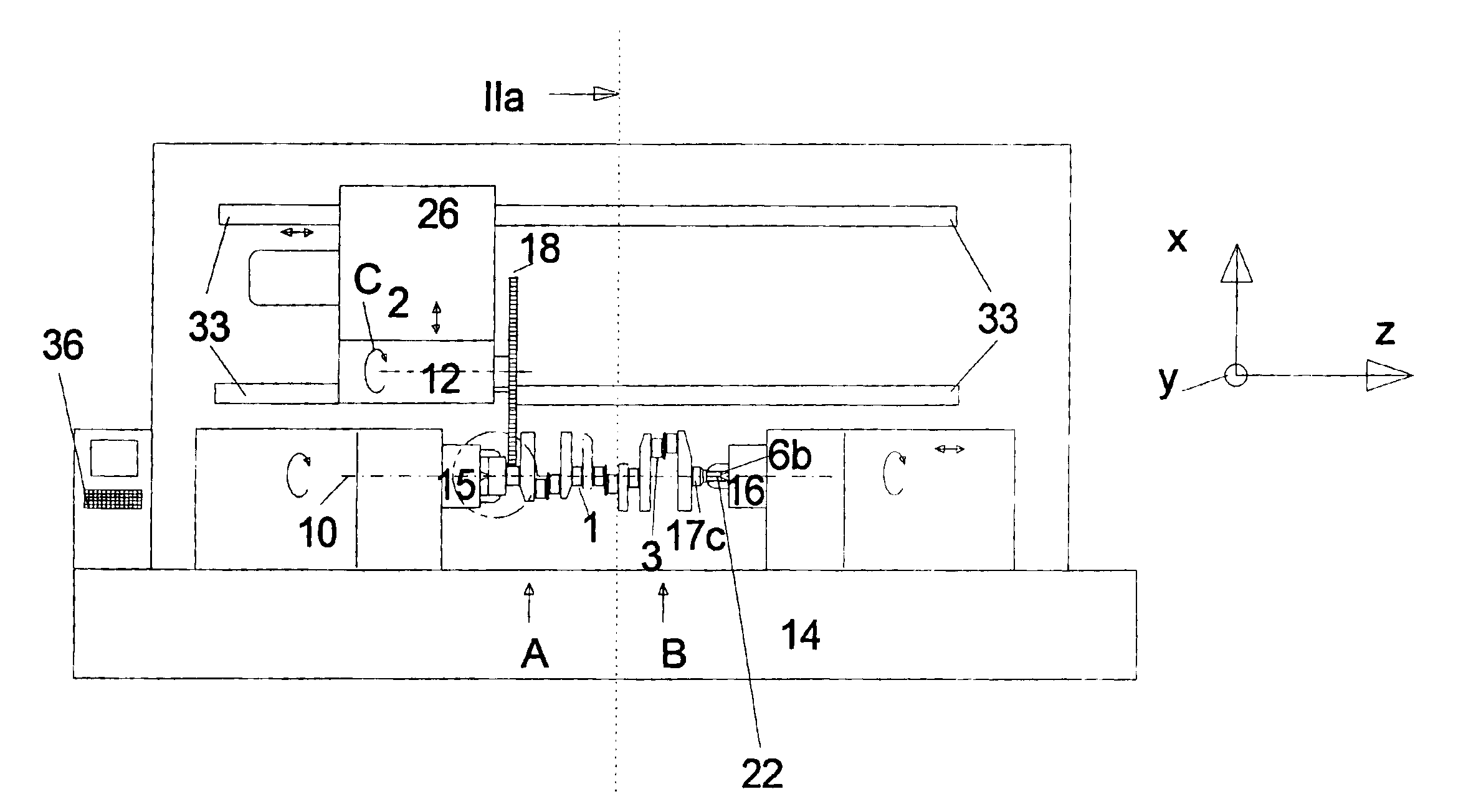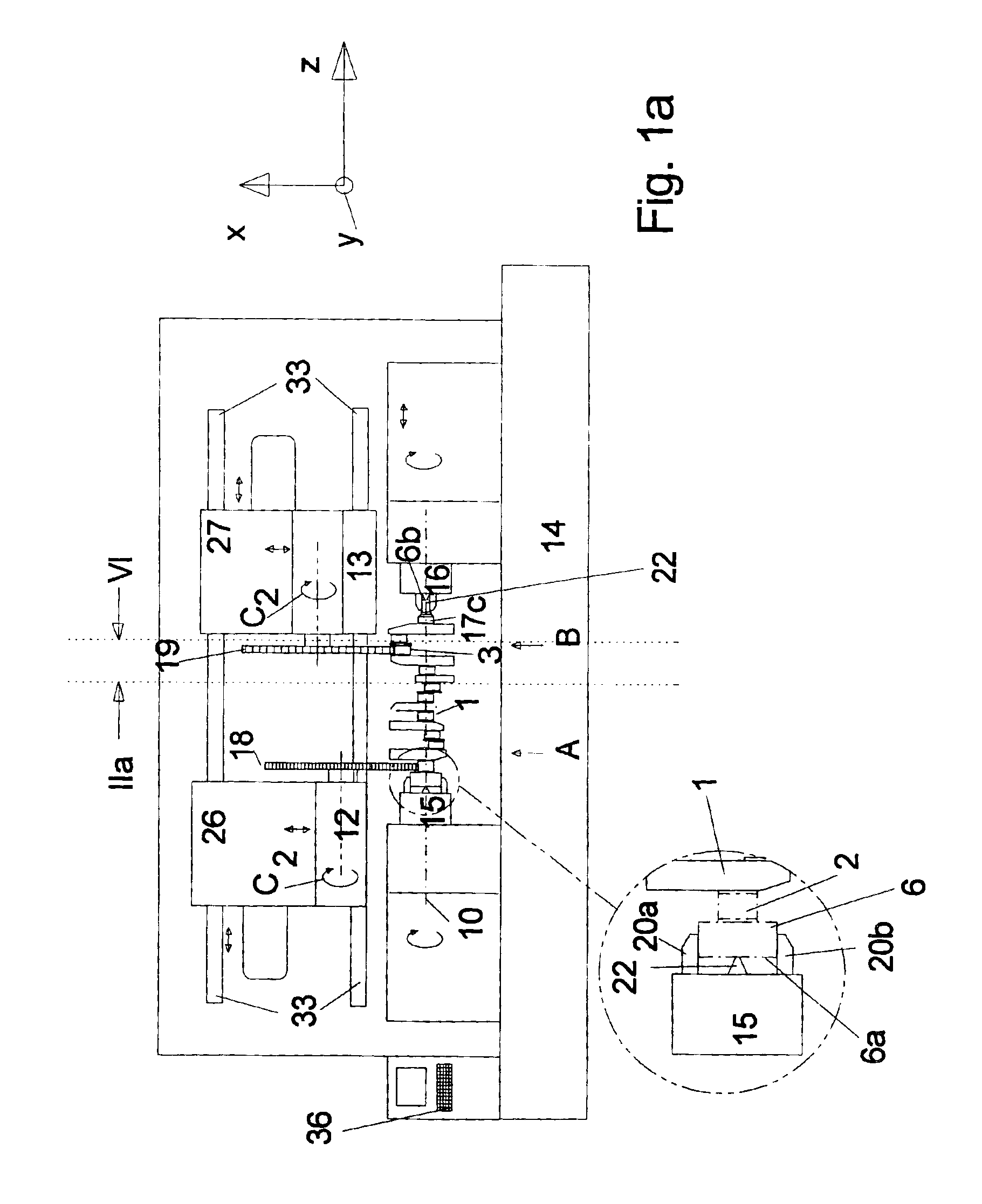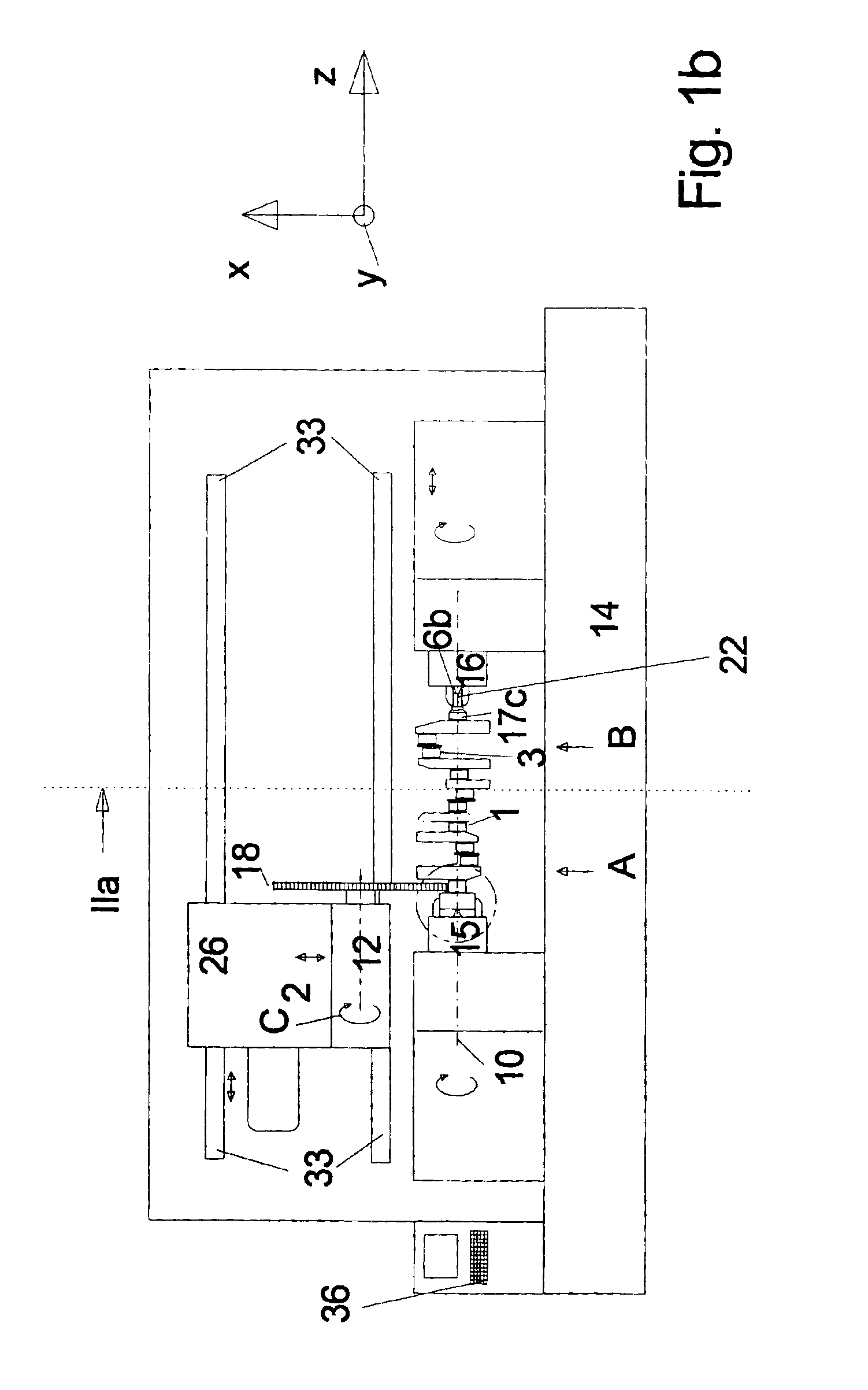Multi-purpose machine
a multi-purpose machine and workpiece technology, applied in the direction of turning equipment, milling equipment/tools, other manufacturing equipment/tools, etc., can solve the problems of rotary speed of workpieces, unfavorable tracking adjustment of tools, and region for gripping workpieces, etc., to achieve high time-saving and low level of expenditur
- Summary
- Abstract
- Description
- Claims
- Application Information
AI Technical Summary
Benefits of technology
Problems solved by technology
Method used
Image
Examples
Embodiment Construction
[0053]FIG. 1a shows a machine tool which accommodates drivably in rotation at its end region and machines a workpiece, for example the illustrated crankshaft 1 which includes both concentric surfaces 2, for example main bearing locations, and also eccentric surfaces 3, for example big-end bearing locations.
[0054]In this case the axial end regions of the workpiece are received in the receiving devices of two oppositely directed, mutually aligned spindles 15, 16. The receiving devices used are both jaw chucks 20 and 21 respectively and also centering points 22, 23 which are arranged at each of the spindles 15, 16.
[0055]The spindles 15, 16 are arranged on the bed 14 of the machine, like the tool supports 12, 13 which each carry a respective tool unit which is drivable in rotation about an axis (C2-axis) which is parallel to the axis of rotation (Z-axis) of the workpiece.
[0056]In addition the tool supports 12, 13 are displaceable in a defined fashion in the X-direction, that is to say t...
PUM
| Property | Measurement | Unit |
|---|---|---|
| rotation | aaaaa | aaaaa |
| angle | aaaaa | aaaaa |
| angle | aaaaa | aaaaa |
Abstract
Description
Claims
Application Information
 Login to View More
Login to View More - R&D
- Intellectual Property
- Life Sciences
- Materials
- Tech Scout
- Unparalleled Data Quality
- Higher Quality Content
- 60% Fewer Hallucinations
Browse by: Latest US Patents, China's latest patents, Technical Efficacy Thesaurus, Application Domain, Technology Topic, Popular Technical Reports.
© 2025 PatSnap. All rights reserved.Legal|Privacy policy|Modern Slavery Act Transparency Statement|Sitemap|About US| Contact US: help@patsnap.com



